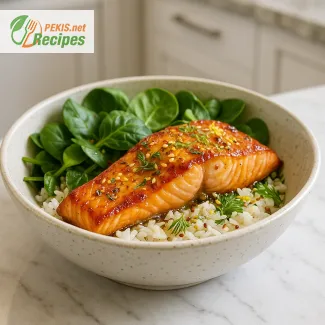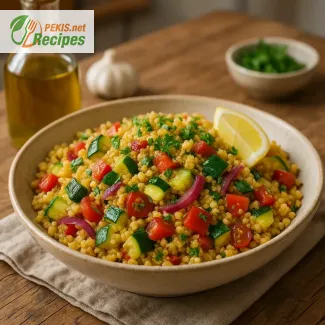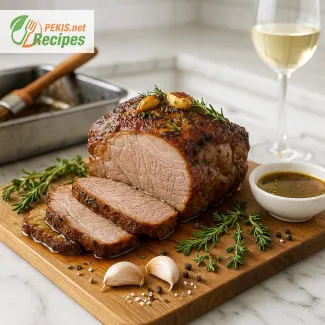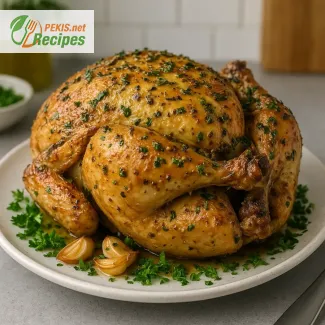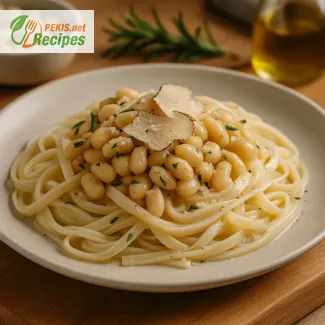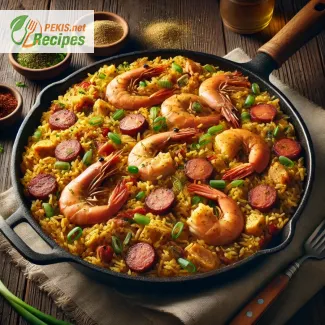
Few dishes evoke the heart and soul of Southern cuisine like jambalaya. This iconic Creole masterpiece, rooted in the vibrant culinary traditions of Louisiana, is a celebration of bold flavors, hearty ingredients, and cultural heritage. Whether you're savoring it in a bustling New Orleans kitchen or recreating the magic at home, the best jambalaya is an unforgettable experience that brings together the perfect balance of spices, proteins, and textures.
Jambalaya is more than just a dish—it's a culinary story that weaves together the influences of French, Spanish, and African cuisines. The result? A one-pot wonder that transforms simple pantry staples into a dish of extraordinary depth and complexity. With its tantalizing aroma, robust seasoning, and comforting warmth, it’s no surprise that jambalaya has earned its place as a staple in Southern households and a favorite on restaurant menus worldwide.
The Secret to Authentic Jambalaya
The key to making the best jambalaya lies in the layering of flavors. Every ingredient plays a vital role, from the Holy Trinity of onions, celery, and bell peppers to the smoky richness of andouille sausage. Traditional jambalaya recipes often feature a medley of proteins, such as tender chicken, succulent shrimp, or flavorful smoked ham, creating a harmonious blend that satisfies both the palate and the soul.
The spices are where jambalaya truly shines. A blend of Cajun or Creole seasoning, including paprika, garlic powder, onion powder, and cayenne pepper, brings a fiery kick that distinguishes this dish from its culinary cousins. Each bite is a burst of spiced perfection, balanced by the earthy, nutty notes of long-grain rice.
For those seeking the ultimate in authenticity, the choice of stock is critical. A rich chicken or seafood stock elevates the dish, infusing the rice with flavor as it cooks to tender perfection. And while variations exist—some adding tomatoes for a Creole twist and others embracing a simpler, tomato-free Cajun approach—one thing remains constant: the importance of quality ingredients and careful preparation.
Why Jambalaya Stands Out
Jambalaya isn’t just a meal; it’s an experience. The aromatic medley that wafts through the kitchen as it simmers is an invitation to gather, celebrate, and indulge. The combination of textures—from the fluffy, flavorful rice to the juicy, spice-kissed meats—offers a sensory delight that keeps diners coming back for more.
The beauty of jambalaya is its versatility. Whether you're preparing a classic recipe for a family dinner or experimenting with modern twists for a dinner party, this dish adapts to your needs. Add heat for spice lovers, incorporate seasonal seafood for a coastal flair, or embrace plant-based ingredients for a vegetarian-friendly version—the possibilities are endless.
A Dish for Every Occasion
The best jambalaya is a dish for all seasons. In the chilly winter months, it offers a bowl of warmth and comfort, while in the summer, its zesty flavors pair beautifully with refreshing beverages and outdoor gatherings. Its rich history and celebratory spirit make it a popular choice for holidays, festivals, and casual get-togethers alike.
No discussion of jambalaya would be complete without acknowledging its ability to bring people together. Like a shared table in a New Orleans bistro, this dish fosters connection, joy, and appreciation for the artistry of Southern cooking. Every forkful is a reminder that the best meals are those made with love, tradition, and an unwavering commitment to quality.
Make Jambalaya Your Own
To truly make the best jambalaya, start by understanding the elements that make it special. Invest in fresh, high-quality ingredients and don’t be afraid to put your own spin on it. While tradition provides the foundation, creativity allows the dish to evolve and reflect your personal taste.
Remember, jambalaya isn’t about perfection—it’s about passion. Whether you prefer a smoky, spicy Cajun version or a tangy, tomato-infused Creole style, the best jambalaya is the one that speaks to your heart and leaves your guests asking for seconds.
So, why wait? Dive into the vibrant world of jambalaya and discover the joys of this culinary treasure. From its irresistible aroma to its bold and satisfying flavors, the best jambalaya is a celebration of everything that makes Southern cuisine truly extraordinary.
- Heat the olive oil in a large, deep skillet or pot over medium heat. Add the andouille sausage and cook until browned, about 3–4 minutes. Remove and set aside.
- In the same skillet, add the chicken pieces. Cook until lightly golden, about 5 minutes, then remove and set aside with the sausage.
- Add the onion, bell pepper, and celery to the skillet. Sauté for 5–7 minutes until softened. Add garlic and cook for another minute until fragrant.
- Stir in the rice, coating it in the oil and vegetable mixture. Cook for 1–2 minutes to lightly toast the rice.
- Pour in the chicken stock and canned tomatoes. Add smoked paprika, cayenne pepper, thyme, oregano, salt, and black pepper. Stir to combine.
- Return the sausage and chicken to the skillet. Bring to a boil, then reduce the heat to low and cover. Simmer for 25–30 minutes, stirring occasionally to prevent sticking.
- In the last 5 minutes of cooking, add the shrimp, ensuring they cook through (turning pink and opaque).
- Once the rice is tender and the liquid is mostly absorbed, remove the skillet from heat. Let it rest, covered, for 5 minutes.
- Garnish with chopped spring onions before serving.
Expert Tips to Perfect Your Jambalaya Recipe
The beauty of jambalaya lies in its versatility and deep flavor profile, making it a favorite for both novice cooks and seasoned chefs. However, there are several ways you can refine and adapt the recipe to elevate your culinary skills, address dietary preferences, or create a more personalized dish. Below are comprehensive tips and insights to help you master jambalaya, ensuring the best results every time.
1. Choose the Right Ingredients
The quality of your ingredients directly impacts the flavor of your jambalaya.
- Proteins: For an authentic taste, use andouille sausage, but if it's unavailable, try smoked kielbasa or chorizo for a similar smokiness. Opt for fresh chicken breast or thighs for tenderness. For seafood, fresh shrimp is ideal; however, prawns or scallops can add an interesting twist.
- Rice: Always choose long-grain white rice, as it cooks to the perfect fluffy texture without clumping. Avoid using short-grain rice, as it can become overly sticky.
- Vegetables: Use fresh, firm vegetables. The "Holy Trinity" (onion, bell pepper, and celery) is the backbone of the dish. Experiment with red or yellow bell peppers for a sweeter flavor profile.
- Spices: For authenticity, invest in a good-quality Cajun or Creole seasoning. To create your own, blend smoked paprika, cayenne, oregano, thyme, garlic powder, and onion powder. Adjust the cayenne to control the spice level.
2. Layer Your Flavors
The process of layering flavors is crucial in creating depth in jambalaya.
- Searing Proteins: Browning the sausage and chicken at the beginning adds a rich, caramelized flavor to the dish. Don't skip this step.
- Deglazing: After sautéing the vegetables, deglaze the pan with a splash of chicken stock or white wine. This will lift the flavorful bits from the bottom of the pan and infuse them into the dish.
- Slow Cooking Rice: Let the rice absorb the broth gradually. Stir occasionally to prevent sticking, but not too frequently, as this can cause the rice to break down.
3. Achieving Perfect Texture
Texture is a hallmark of a great jambalaya, so attention to detail is key.
- Rice-to-Liquid Ratio: The ratio of rice to liquid (usually 1:2) must be precise. Too much liquid can make the dish mushy, while too little leaves the rice undercooked.
- Shrimp Timing: Add shrimp during the final minutes of cooking to avoid overcooking. They should be tender and just opaque.
4. Adapting to Dietary Needs
Jambalaya is inherently flexible, making it easier to adapt for dietary restrictions.
- Gluten-Free Version: Most jambalaya recipes are naturally gluten-free. Ensure the sausage and stock are certified gluten-free.
- Vegetarian/Vegan Options: Replace meat with plant-based sausage or tofu. Add robust vegetables like mushrooms, zucchini, or eggplant for additional texture. Use vegetable stock instead of chicken stock.
- Low-Sodium: Control sodium by using homemade stock and limiting added salt. Opt for low-sodium canned tomatoes and sausage.
- Low-Carb: Substitute rice with cauliflower rice, adding it at the end to maintain texture.
5. Adjusting Spice Levels
The spice in jambalaya can be adjusted to suit individual preferences.
- For a Spicier Dish: Increase the cayenne pepper or add fresh jalapeños or red chili flakes. A dash of hot sauce just before serving can also enhance the heat.
- For a Milder Dish: Reduce or omit cayenne pepper. Use sweet paprika instead of smoked paprika for a gentler flavor profile.
6. Enhancing Presentation
Presentation plays a big role in making the dish appealing.
- Garnish Generously: Use fresh spring onions or parsley for a pop of color. For extra zest, add a squeeze of lemon juice before serving.
- Serve Stylishly: Plate the jambalaya in a rustic skillet or deep bowl to showcase its hearty textures and vibrant colors.
7. Batch Cooking and Storage
Jambalaya is an excellent dish for meal prep, but it requires careful handling.
- Refrigeration: Store leftovers in an airtight container in the refrigerator for up to 3 days. Reheat gently to avoid overcooking the rice.
- Freezing: For longer storage, freeze in portion-sized containers. Thaw in the refrigerator overnight before reheating.
- Reheating Tips: Add a splash of stock or water to revive the texture when reheating.
8. Experimenting with Variations
Feel free to personalize your jambalaya by exploring regional or seasonal variations.
- Seafood Jambalaya: Focus on shrimp, crab, or crawfish for a coastal flair.
- Creole Style: Add more tomatoes for a sweeter, tangier profile.
- Smokier Cajun Style: Use more paprika and smoked sausage, and skip the tomatoes.
- Fusion Jambalaya: Incorporate global flavors, such as saffron for a Spanish touch or soy sauce for an Asian twist.
9. Perfect Pairings
Complement your jambalaya with the right sides and beverages.
- Sides: Cornbread, coleslaw, or a fresh green salad pair well with the richness of jambalaya.
- Drinks: A crisp white wine or a cold beer balances the bold spices beautifully. For a non-alcoholic option, try sweet iced tea or lemonade.
10. Cultural Connection
Lastly, embrace the cultural roots of jambalaya. Understanding its origins can deepen your appreciation for the dish. Rooted in Creole and Cajun traditions, it’s a celebration of resilience, community, and culinary artistry. Cooking jambalaya isn’t just about the end result—it’s about enjoying the process, sharing the experience, and honoring the history of Southern cuisine.
By following these professional tips and insights, you can transform an already delicious dish into a true masterpiece that reflects your taste, creativity, and skill. Whether you're cooking for a family gathering or a special occasion, your jambalaya will stand out as a flavorful and heartfelt expression of culinary excellence.
- Allergens: Contains shellfish (shrimp).
- Gluten-free: Ensure sausage and stock are certified gluten-free.
- Substitution Tips:
- For shellfish allergies: Replace shrimp with diced zucchini or mushrooms for a vegetarian option.
- Gluten-free option: Double-check rice and spices for gluten-free certification.
- Vitamin A: 25% RDA (boosts immune health and vision).
- Vitamin C: 35% RDA (supports skin health and collagen production).
- Vitamin B6: 20% RDA (aids energy metabolism).
- Iron: 15% RDA (essential for oxygen transport in blood).
- Magnesium: 10% RDA (supports muscle and nerve function).
- Potassium: 12% RDA (helps regulate blood pressure).
- Lycopene (from tomatoes): Helps reduce inflammation and protect against oxidative stress.
- Capsaicin (from cayenne pepper): Supports metabolic health and reduces free radical damage.
- Flavonoids (from bell peppers): Protect cells from oxidative stress, promoting overall health.
